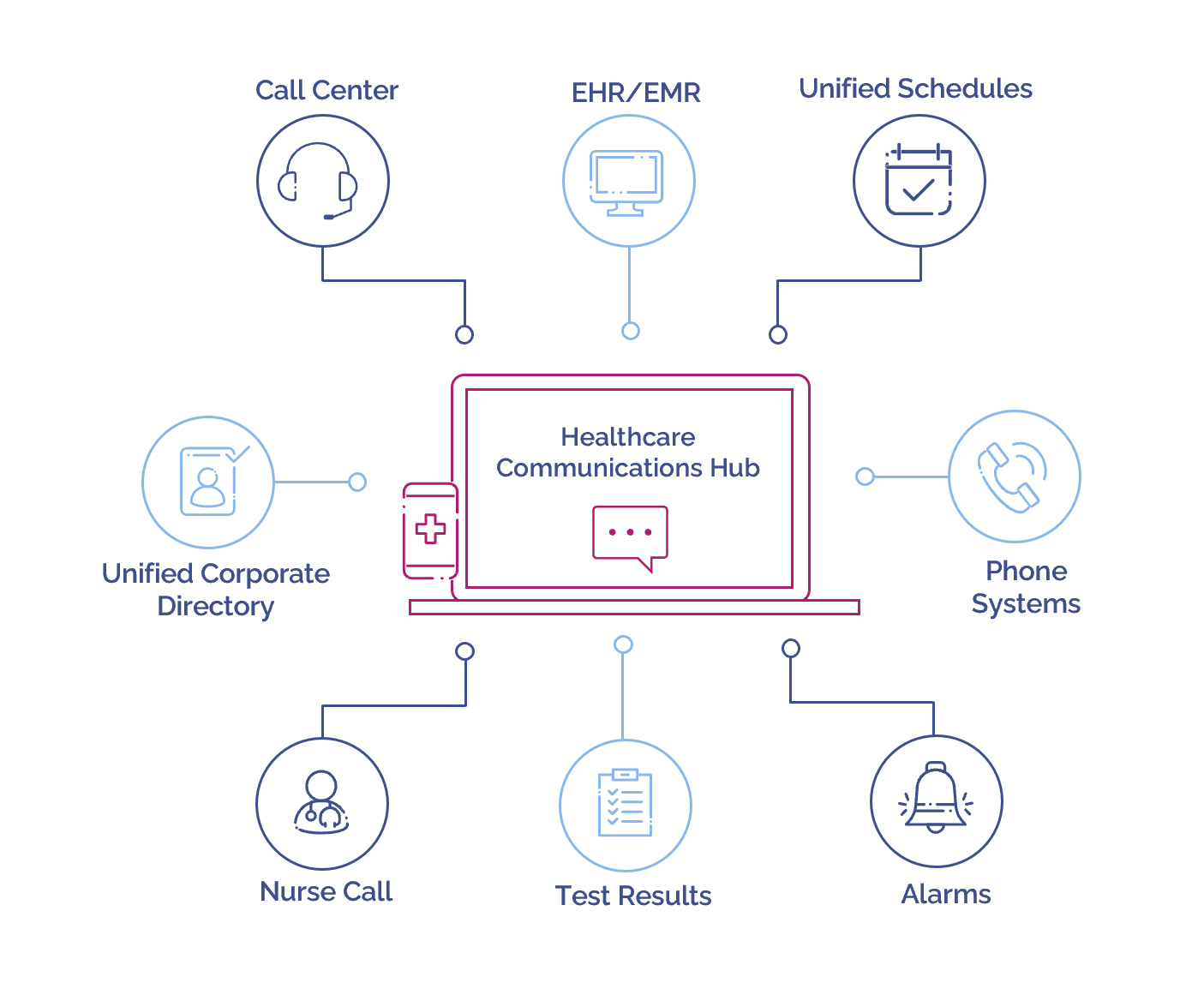Leveraging Omnichannel Communication Tools to Streamline Patient Flow Logistics
Written by Terry Cote, Client Outcomes Engineer, ABOUT
There is a growing trend in healthcare around omnichannel healthcare delivery, meaning delivering health-related services from an in-person clinic to digital tools like virtual care and video. There is also an omnichannel engagement trend, meaning providing in-person, digital, and telephonic channels for consumers to engage with healthcare providers. However, in this article, we want to explore the topic of omnichannel communication within the health system, specifically using it to accelerate the process of moving patients into, within, and out of the acute care setting.
What is Omnichannel Communication?
First, what is omnichannel communication? G2 defines it as, “Omnichannel communication unifies the customer experience (CX) across different channels, such as websites, mobile apps, social media, and phone calls. It can be thought of as a single-point system used for optimizing interactions collectively regardless of the channel used.” In the context of health system care orchestration, it is using synchronous and asynchronous channels to communicate, coordinate, and collaborate across care teams on the transition of patients from one care setting to another.
Why You Need an Omnichannel Communication Strategy for Patient Transitions
Just as consumers use multiple channels for communicating with the health system throughout their patient journey, physicians and care teams use multiple communication channels for collaborating and coordinating patient transitions, such as acute patient transfers and discharges. Not only is it important to provide multiple modes of communication throughout the transition process, but it is important to incorporate digital where possible as phone tag can add a significant amount of time and potential roadblocks to the transfer process. As a result, one study showed that implementing secure text messaging in the health system can reduce phone tag by 80%. Moreover, miscommunication can create regulatory compliance and patient safety risks so it is imperative to use trackable, auditable, and secure forms of communication whenever possible, while reserving the use of immediate phone calls for more emergent cases.
Omnichannel Communication Tools to Incorporate into Your Patient Transition Workflow
Secure Messaging
There are many forms of omnichannel communication, but in B2B healthcare, it is often facilitated through clinical communication and collaboration (CC&C) platforms which connect care team members through digital, secure messaging solutions and integrate with the clinical systems. In fact, 90% of all hospitals have invested in CC&C solutions, a 53% increase since 2018, and 52% of hospitals report that their investment in CC&C is health system-wide.

While CC&C platforms are often used in clinical settings, there’s untapped potential for leveraging this technology to collaborate across care teams to accelerate acute patient transfers and discharges. ABOUT recently launched Secure Messaging seamlessly integrated in the Orchestration Engine to empower care teams to efficiently communicate and collaborate to quickly transfer patients for improved outcomes. Initial client results showed that eliminating excess phone calls, documentation, and transcription and replacing it with secure messaging between transfer agents and facility house supervisors decreased bed request to bed assignment time by 40% (76 minutes). Care teams were also satisfied with being able to communicate digitally for less emergent cases, while immediately addressing emergent transfer cases via phone.
Provider Portals
Provider portals are secure web-based applications for referring providers and their staff to request transfers and/or access their patient’s medical information electronically without making a phone call. The ABOUT Online Transfer Request portal, for instance, allows clinicians and care teams to request transfers and notify agents online to eliminate phone calls and decrease patient transfer times. Provider portals have several benefits, including:
- Quick and easy transfer requests: Clinicians request transfers in an online portal that links directly to the access center without the need for phone calls.
- Reduction in data entry time and increased data entry access: The clinician completes an online request form with pre-populated data from the EHR instead of relaying critical patient data via phone.
- Accelerate transfer acceptance: The access center agent is immediately notified when a request has been submitted to begin the process, alleviating phone tag.
- Clinician and care team satisfaction: The health system can offer a fast and streamlined transfer experience for clinicians and care teams reducing cognitive load.
Integrated Call Recording
Telephony is still one of the most prominent communication technologies in healthcare and often the quickest way to facilitate an acute, complex, and emergent transfer case. Even though secure text messaging is gaining traction, it cannot replace a live phone call between the referring physician and accepting physician. It is best practice to record all phone calls, especially physician-to-physician phone calls to protect from potential EMTALA violations if a case comes into question. Integrating call recording into patient transition processes and technology can enhance overall productivity, documentation, and operations.
ABOUT offers call recording integrations which allows you to securely record, play, archive, and distribute live phone conversations pertaining to patient transitions and attach them to transfer records. Recordings are in one place for easier research or quality analysis on specific cases.
Incorporating an omnichannel communication strategy into patient transition operations and logistics has the potential to boost efficiency and productivity while reducing administrative time and cognitive load associated with the processing of time-sensitive patient-related requests and documentation. Request a demo today to learn how ABOUT is enabling leading health systems to accelerate transfer times, improve accuracy, and increase care team satisfaction with omnichannel communication tools.